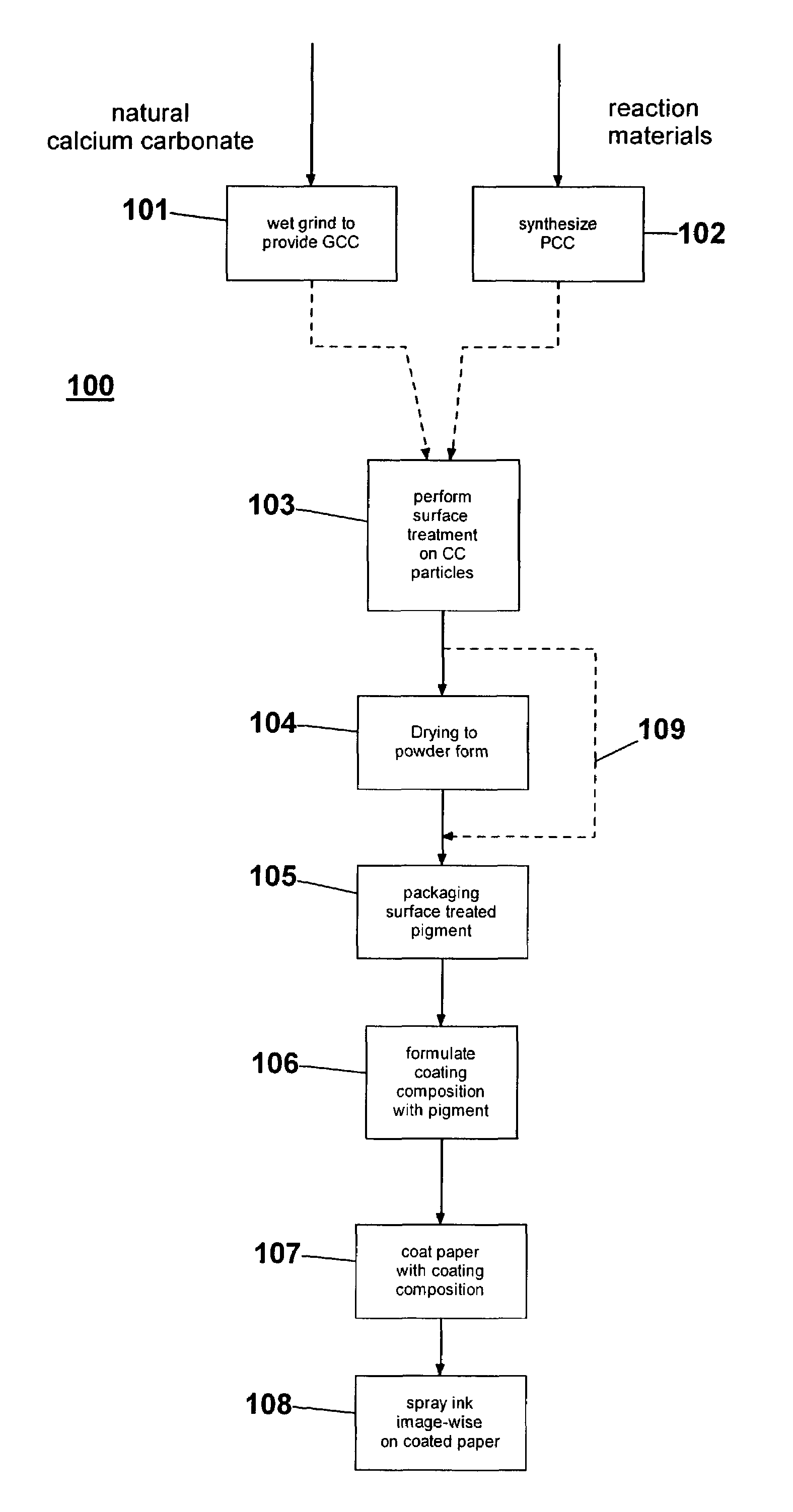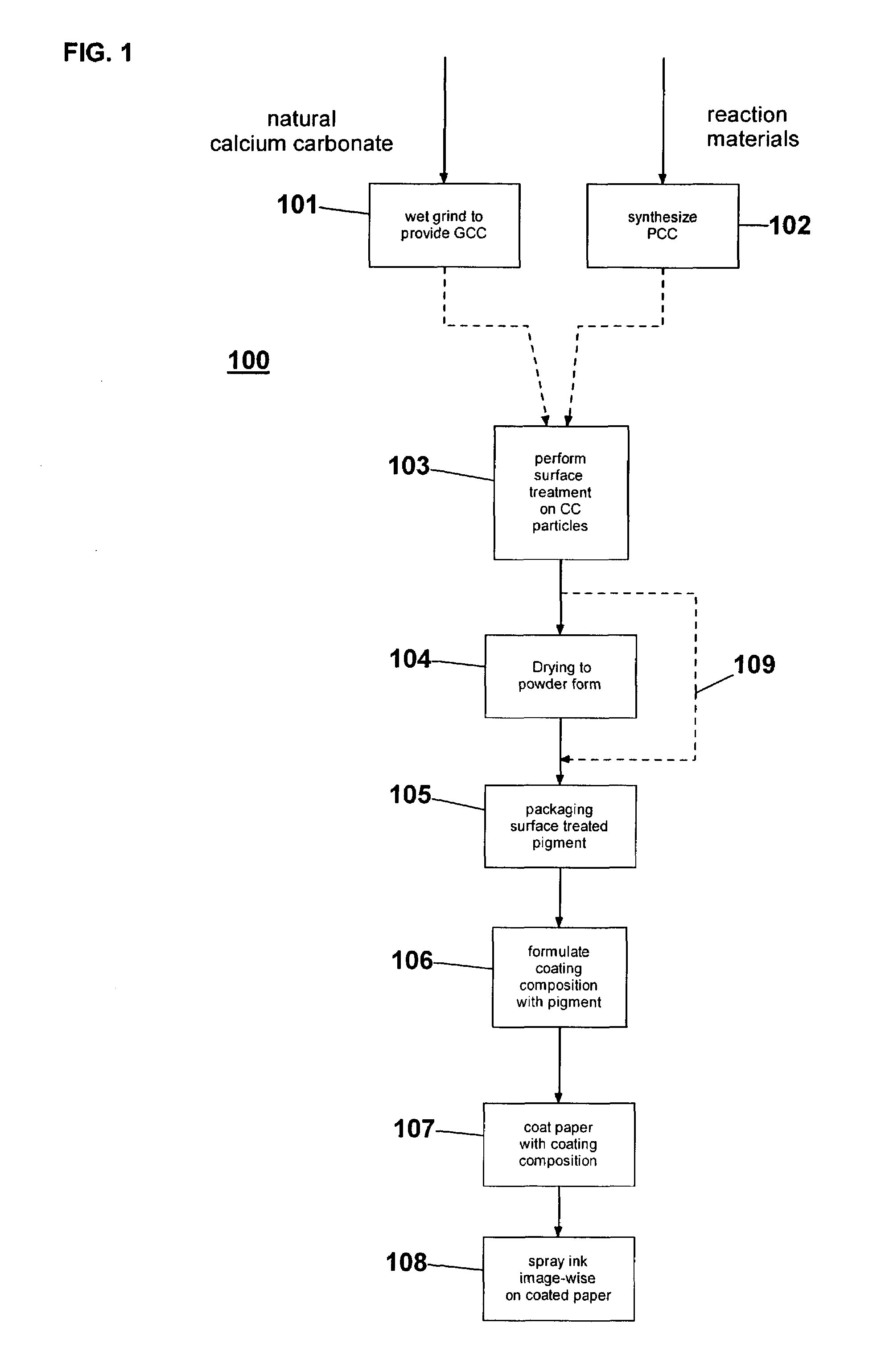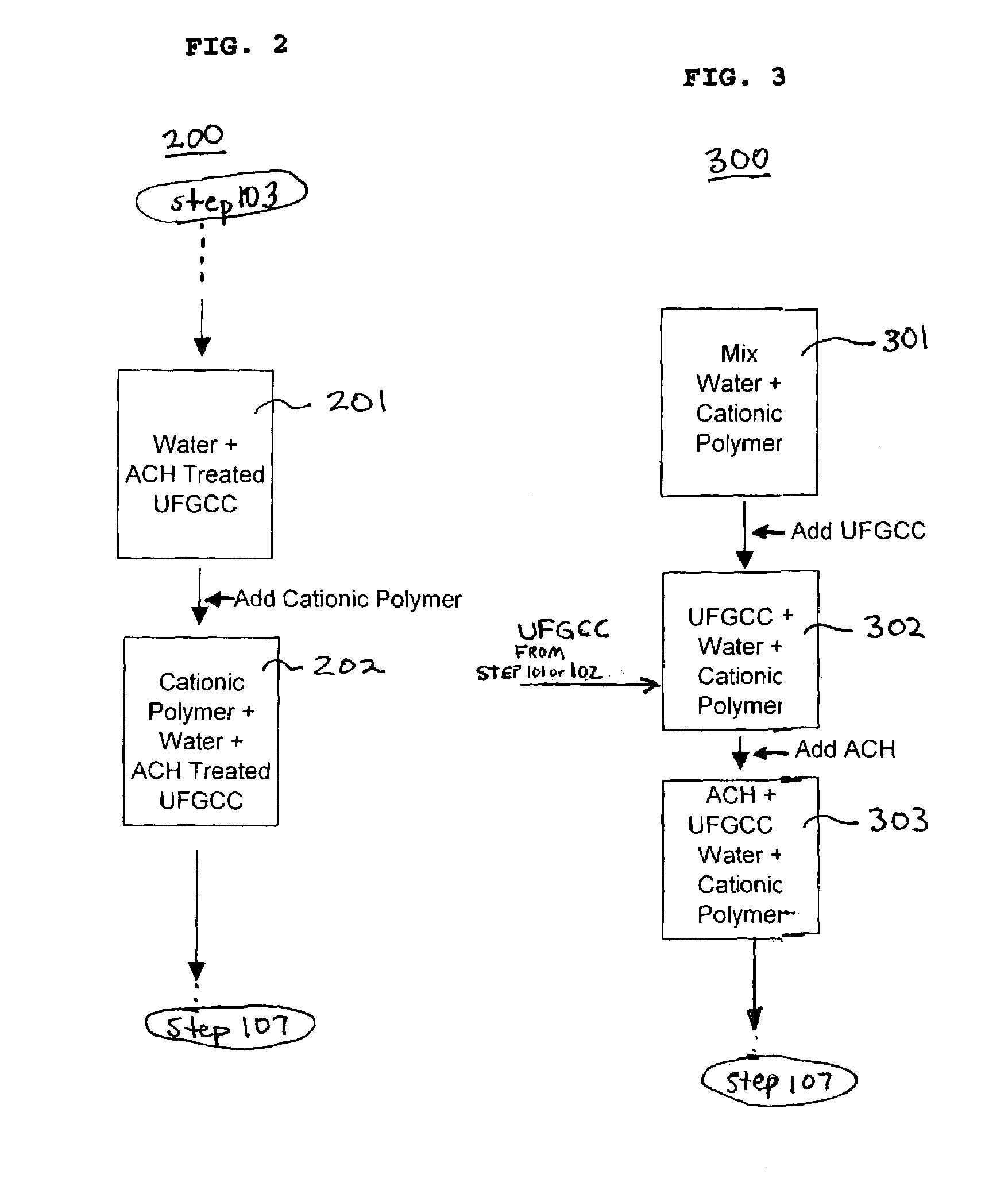Pigment for use in inkjet recording medium coatings and methods
a technology of inkjet recording medium and pigment, which is applied in the direction of inks, printing, thermal imaging, etc., can solve the problems of difficult to achieve proper balance of these properties, unsuitable standard uncoated papers generally are not suitable for high-resolution inkjet printing, and the printed image is somewhat fuzzy, etc., to achieve uniform coating appearance, reduce costs, and reduce the contents of the binder
- Summary
- Abstract
- Description
- Claims
- Application Information
AI Technical Summary
Benefits of technology
Problems solved by technology
Method used
Image
Examples
example 1
[0083]As control runs, an initial series of tests were conducted on a number of different kinds of pigments that did not have surface treatments performed on them with a polyvalent metal salt of a Group II or III metal.
[0084]Coating formulations contained 100 parts of the pigment indicated in Table 1 along with 8 parts per hundred (pph) of a styrene-butadiene latex (i.e., per 100 parts pigment). The coating was applied to a base paper with a wire round rod and was applied at a coat weight of approximately 10 g / m2.
[0085]Lab coated matte finished paper samples were produced using each respective pigment, and then printed with a HP model 820 Cse inkjet printer. The printer setting was set at normal print speed.
[0086]Table 1 below shows a respective pigment's affect observed on print density (yellow (Y), magenta (M), cyan (C), and black), ink drying, and print gloss, among other properties.
[0087]
TABLE 1Printed image assessmentPrint DensityComposite InkPrinterPigmentYel.Mag.CyanBlackDens...
example 2
[0108]A further series of experiments was conducted to compare the print performance achieved using surface treated UFGCC pigments.
[0109]Table 2 lists four different types of cationic materials that were used to surface treat four different respective samples of ultra fine ground calcium carbonate (UFGCC) for which the inkjet color densities were measured and reported. Data shown here was based on a surface treatment using a 2% by weight level of cationic agent in the surface treatment medium in which the GCC particles were dispersed. ACH was used to treat one UFGCC sample while the other three samples were treated with one of several types of polyquaternary amines, which were AGEFLOC B50LV produced by Ciba Specialty chemical water treatment Ltd.; 261LV produced by Nalco; and CP-2.
[0110]The UFGCC used was a commercial product, Hubercarb FG-1, produced by the J.M. Huber Corporation. This material was produced by making the GCC down in a 5 h.p. Cowles dissolver (Model W-14-2) made by ...
example 3
[0114]In another series of experiments, the affect of ACH cationic material dosage on print color densities and ink drying rate was experimentally investigated.
[0115]Digital printing was conducted in a similar manner as described in the prior examples and color printing results are summarized in Table 3 below.
[0116]
TABLE 3% ACHPrint color densitiesComposite colorsTreatmentYellowMagentaCyanBlack(Y + M + C)40.691.011.121.562.8260.691.031.141.592.8580.731.081.251.653.06120.811.131.281.623.22160.891.201.291.633.39
[0117]As seen by the results in Table 3, when the amount of ACH is increased in the pigment, the print color densities of the coated paper also increased proportionally. High print color density is one of the key inkjet print quality parameters besides print resolution, ink feathering, color-to-color bleed and ink drying rate. The ACH dosage can be empirically optimized to achieve the best overall inkjet print quality and can be combined with other polymers to reduce cost.
PUM
| Property | Measurement | Unit |
|---|---|---|
| height | aaaaa | aaaaa |
| specific surface area | aaaaa | aaaaa |
| specific surface area | aaaaa | aaaaa |
Abstract
Description
Claims
Application Information
 Login to View More
Login to View More - R&D
- Intellectual Property
- Life Sciences
- Materials
- Tech Scout
- Unparalleled Data Quality
- Higher Quality Content
- 60% Fewer Hallucinations
Browse by: Latest US Patents, China's latest patents, Technical Efficacy Thesaurus, Application Domain, Technology Topic, Popular Technical Reports.
© 2025 PatSnap. All rights reserved.Legal|Privacy policy|Modern Slavery Act Transparency Statement|Sitemap|About US| Contact US: help@patsnap.com



